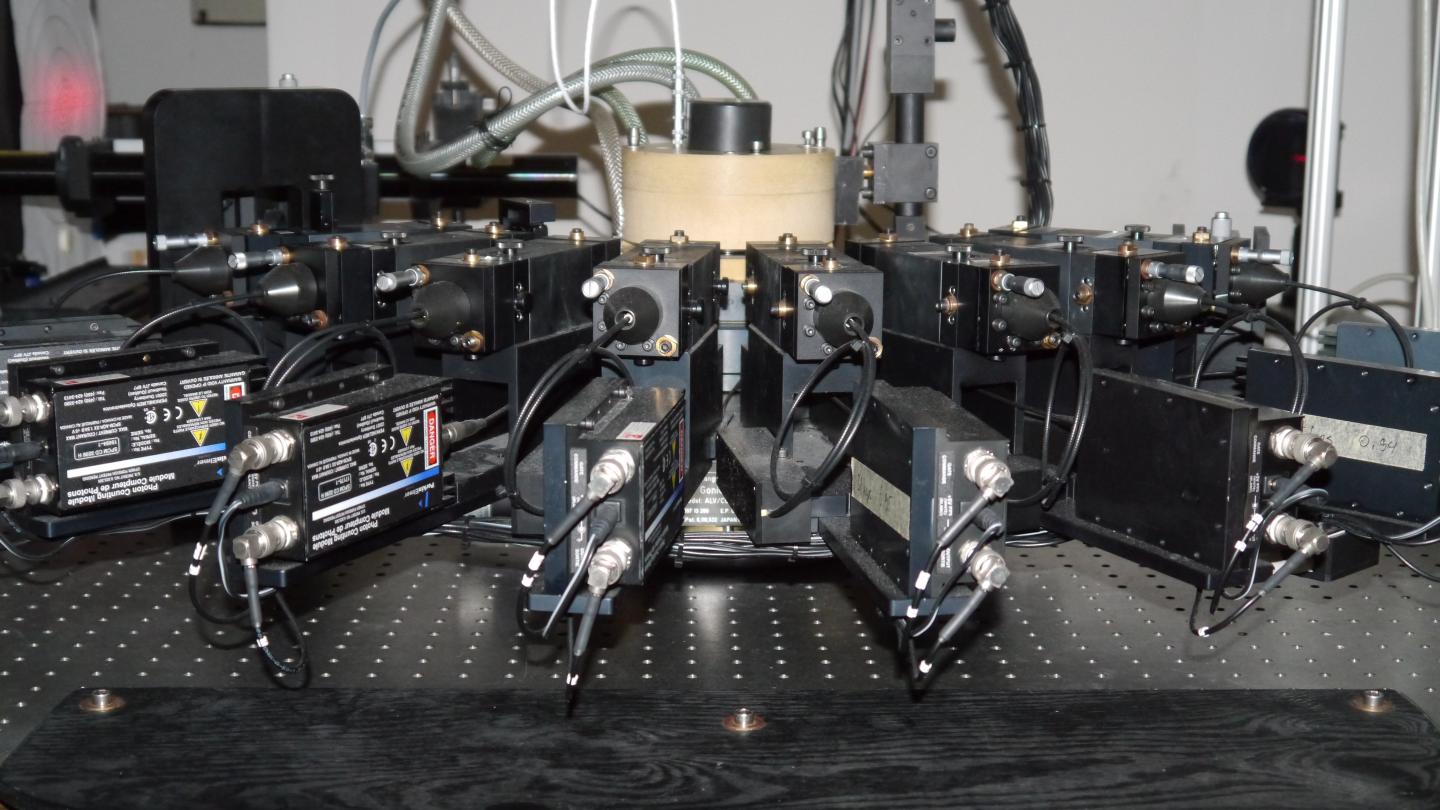Research alliance on ‘Adaptive Polymer Gels with Controlled Network Structure’ will close a gap in the German research landscape

Credit: photo/©: Georg Conrad, JGU
Superabsorbent materials in baby diapers and soft contact lenses seem to be worlds apart but have one thing in common: They are made of polymer gels that are permeable to certain substances. Soft contact lenses, for instance, must allow the delivery of ions and oxygen to the cornea, which means that they need to ensure the transport of both hydrophilic and hydrophobic molecules. Similarly, polymer gels that swell in different fluids and that are therefore permeable to a variety of substances can potentially be used as membranes in fuel cells or in antimicrobial coatings. However, to make this truly useful, we need to understand the nanostructure and microstructure of these polymer gels so that we know exactly what they are capable of. A new alliance of six German research institutions is going to investigate this aspect over the coming years. The German Research Foundation (DFG) has given its approval to the new Research Unit 2811 on “Adaptive Polymer Gel with Controlled Network Structure” and will be funding it to the tune of some EUR 2 million over the next three years.
A perfect blend of the research expertise at six centers
“Up to now, there has been no DFG-funded research unit on polymers in Germany. Our group will be the first”, said Professor Sebastian Seiffert. He has been Professor of Physical Chemistry of Polymers at Johannes Gutenberg University Mainz (JGU) since 2016 and is the research unit’s spokesperson. The idea for the project emerged from conversations he had with co-spokesperson Dr. Michael Lang of the Leibniz Institute for Polymer Research Dresden during the 2015 European Polymer Federation Congress. “Both of us were interested to find out what kind of heterogeneities exist in a network and how to best control and analyze them,” said Lang. “We realized very quickly that we would need a number of different measurement and simulation methods along with a wide range of tests to tackle such a complex issue, which is all the way beyond what the two of us could do. Once we were clear about the specific requirements in terms of measurement, synthesis, and simulation that would help us understand the issue in a wider context, we were able to put together a team of seven experts.”
The idea not only amazed the researchers involved. It was also warmly welcomed and emphatically recommended for funding by a DFG expert committee. “Every project within the research unit is represented at the highest level, and each of us has expertise that complements that of the others,” as Seiffert pointed out with regard to the collaboration within the group. It includes scientists from the Leibniz Institute for Polymer Research Dresden (IPF), Friedrich Schiller University Jena, the University of Stuttgart, Martin Luther University Halle-Wittenberg, and TU Darmstadt.
“Our common goal is to create polymer networks from both water- and oil-soluble building blocks and to combine these building blocks in a controllable structure,” explained Seiffert. So-called amphiphilic networks of both water- and oil-soluble components can pass either one or the other liquid, which is interesting, for instance, when it comes to controlling the selective transport of active substances. The microstructure of the polymer gel is crucial here. It is rarely homogeneous but rather exhibits irregularities like those seen in marble cake, whereby the marbling is determined by both the way the cake is made and the actual working conditions at the time. The group believes that their first task is to obtain a fundamental and systematic understanding of how these irregularities occur in a network structure and what kind of role the production process and the condition of the sample play. All this determines the materials’ properties and thus their possible uses.
Mainz is a historically established center of polymer research
There are essentially two techniques that can be used to examine and characterize amphiphilic gels under differing conditions: light scattering and multi-quantum nuclear magnetic resonance spectroscopy. Johannes Gutenberg University Mainz has the required instruments and skills to carry out the light scattering investigations. “Mainz has been working in this field for decades and is now one of the leading centers in the world in this regard,” emphasized Seiffert, noting the part the JGU Institute of Physical Chemistry has played in this success story. Halle-Wittenberg is a unique and outstanding center that masters the technique of multi-quantum nuclear magnetic resonance spectroscopy. The experimental work will be complemented by surface analysis in Darmstadt and computer simulation of the networks at Dresden and Stuttgart, both leaders in this field. All of this work will be underpinned by the chemical expertise of Dresden and Jena, where the gel samples can be produced with the highest possible level of control.
The group is not planning to develop any new materials in the first instance, but to use the initial phase to find answers to fundamental questions. Possible further work on designing new materials may then start during a second phase of funding. The DFG Research Unit will be officially launched at a kickoff meeting in Dresden on August 15, 2019.
###
Media Contact
Dr. Sebastian Seiffert
[email protected]




